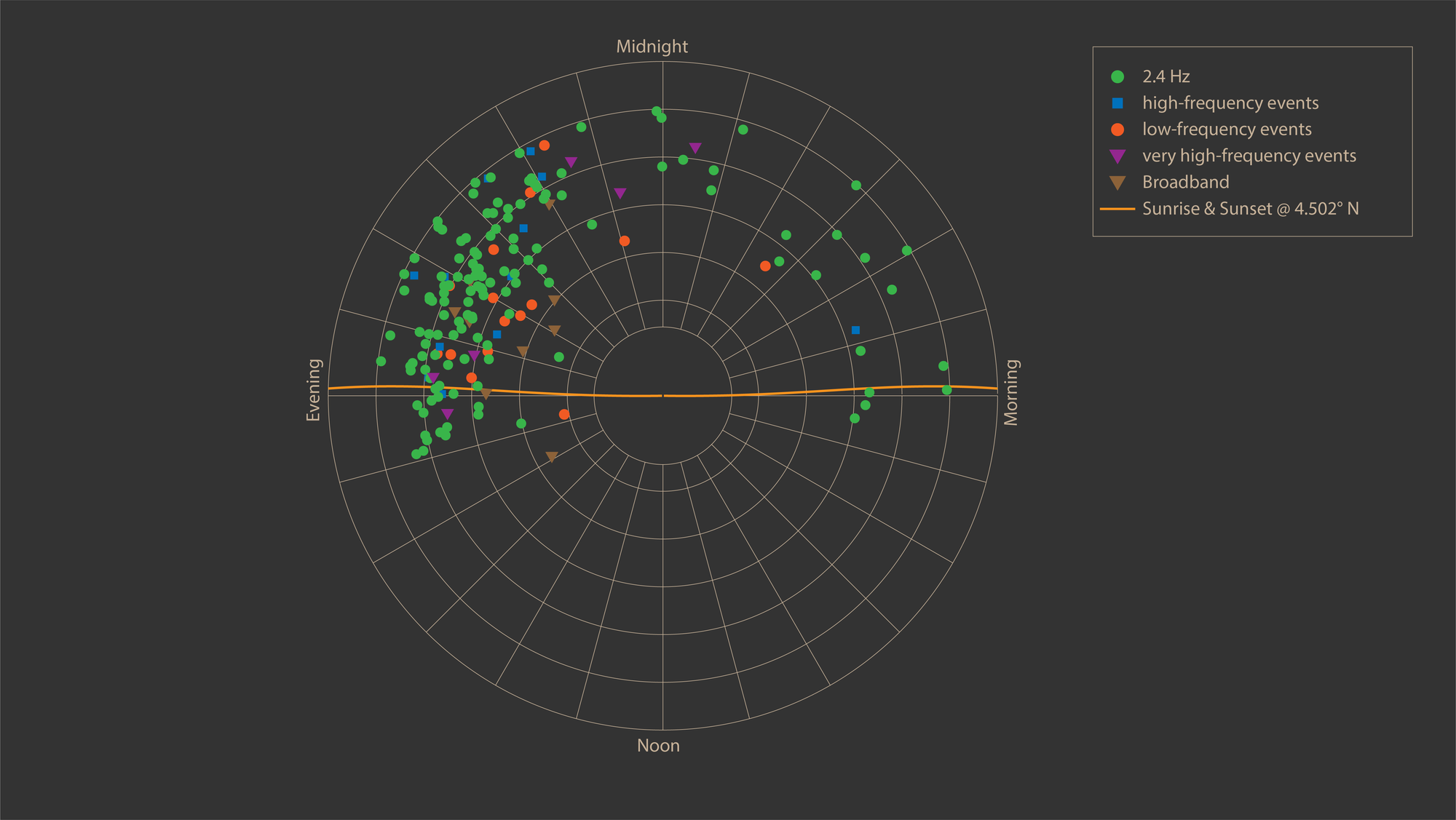Quake measurements at night-time
Quake measurements at night-time
A day on Mars, a 'sol', lasts 24 hours and 37 minutes, almost the same length as a day on Earth. The graphic shows a 24-hour clock with Martian hours, which are therefore slightly longer than terrestrial hours. Midnight is at the top, followed clockwise by morning with sunrise, noon and evening with sunset. The slightly curved orange line indicates the times of sunrise and sunset, which vary slightly throughout the year. The distance from the centre indicates the number of sols since InSight's landing. The innermost circle is Sol 72, when the seismometer began to record continuously. The different symbols show the various types of marsquakes, which have different signal frequencies. Since the weather becomes noticeably calmer after sunset, the first half of the night is the best time window for recording distant marsquakes, because practically no wind interferes with the measurements being performed by the ultra-sensitive experiment.

